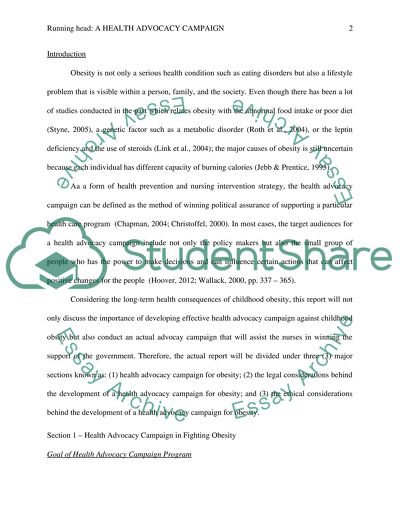Cite this document
(“A Health Advocacy Campaign for Childhood Obesity Research Paper”, n.d.)
Retrieved from https://studentshare.org/nursing/1402272-developing-a-health-advocacy-campaign
Retrieved from https://studentshare.org/nursing/1402272-developing-a-health-advocacy-campaign
(A Health Advocacy Campaign for Childhood Obesity Research Paper)
https://studentshare.org/nursing/1402272-developing-a-health-advocacy-campaign.
https://studentshare.org/nursing/1402272-developing-a-health-advocacy-campaign.
“A Health Advocacy Campaign for Childhood Obesity Research Paper”, n.d. https://studentshare.org/nursing/1402272-developing-a-health-advocacy-campaign.


